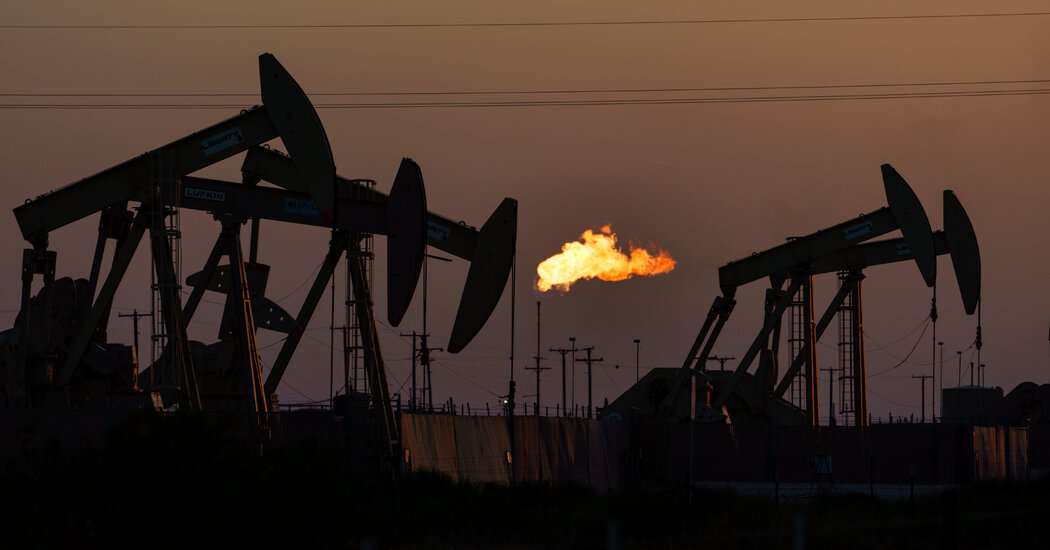Satellite data shows the U.S. releasing more and more of the potent greenhouse gas into the atmosphere, researchers said, despite pledges to cut back.
The United States’ booming fossil-fuel industry continues to emit more and more planet-warming methane into the atmosphere, new research showed, despite a U.S.-led effort to encourage other countries to cut emissions globally.
Methane is among the most potent greenhouse gases, and “one of the worst performers in our study is the U.S., even though it was an instigator of the Global Methane Pledge,” said Antoine Halff, the co-founder of Kayrros, the environmental data company issuing the report. “Those are red flags.”
Much of the world’s efforts to combat climate change focus on reducing carbon dioxide emissions, which result largely from the burning of fossil fuels like coal, oil and gas, and whose heat-trapping particles can linger in the atmosphere for hundreds of years. But methane’s effects on the climate — which have earned it the moniker “super pollutant” — have become better appreciated recently, with the advent of more advanced leak-detection technology, including satellites.
Unlike carbon dioxide, methane emissions don’t derive from consumption, but rather from production and transportation of the gas, which is the main component of what is commonly known as natural gas. Methane can leak from storage facilities, pipelines and tankers, and is also often deliberately released. Methane is also released from livestock and landfills, and occurs naturally in wetlands.
Kayrros focused on fossil fuel facilities, where the practices of “venting,” or the intentional release of large quantities of methane, and “flaring,” which is when it is intentionally burned off, are both common. Kayrros used satellite data combined with artificial intelligence analysis of the data to draw its conclusions.
